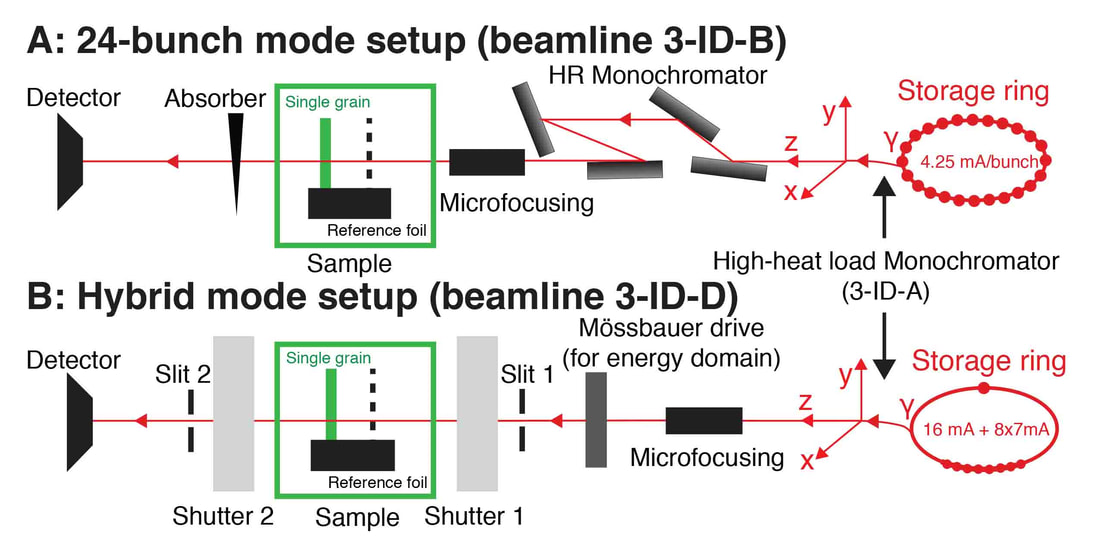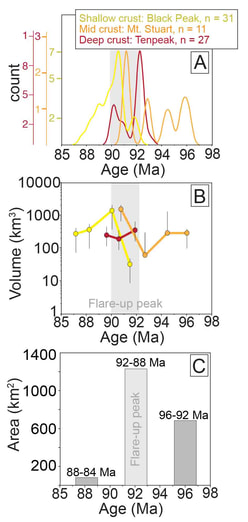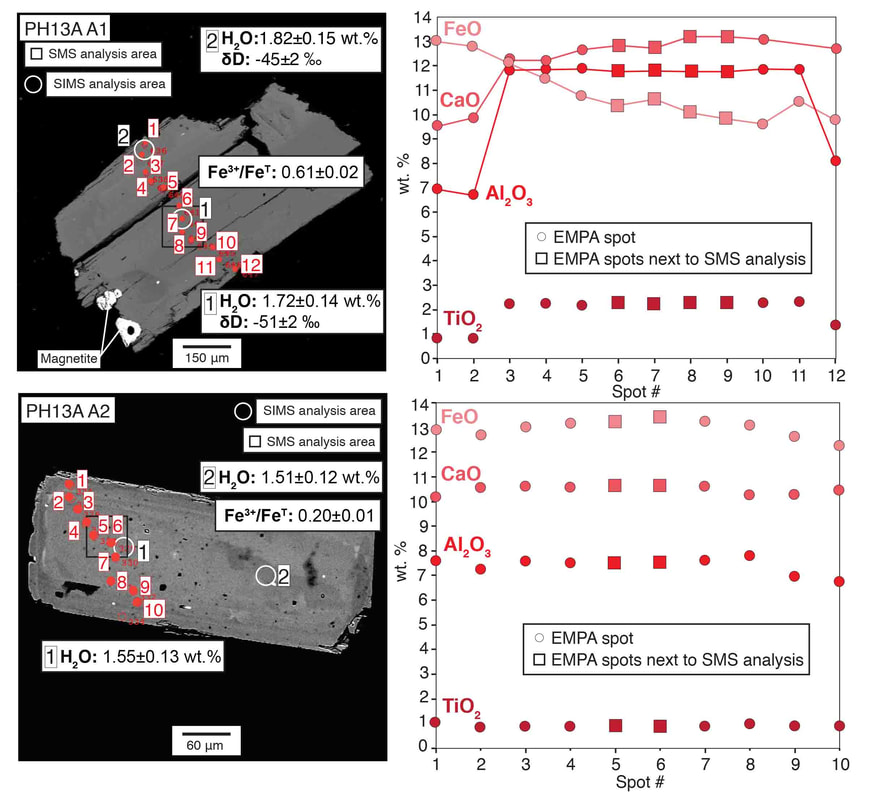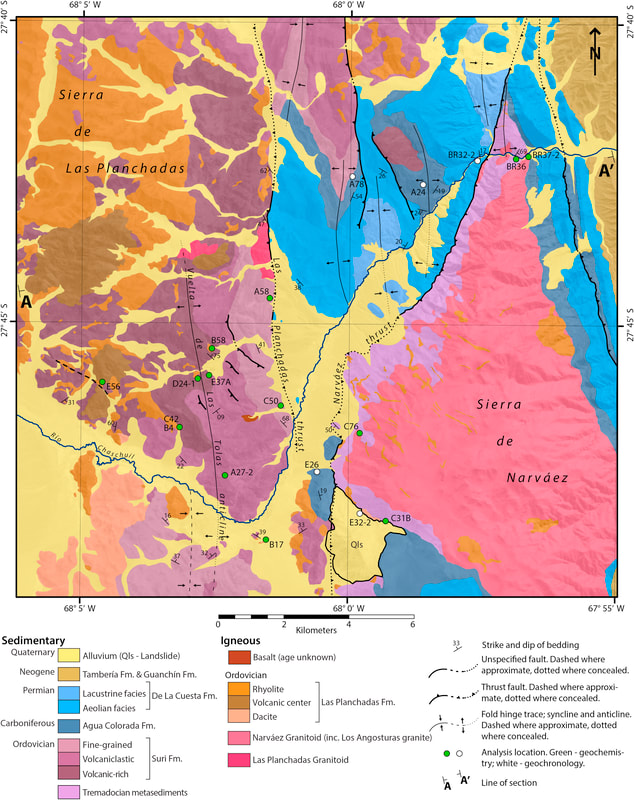The primary research interest of the Magmatic System group at UC Davis is to understand the physical, chemical, and temporal processes that form continental crust in subduction zone settings. We primarily focus on intrusive rocks as they comprise the vast majority of magmas produced in arcs (volcanic to plutonic ratios of 1:20-1:30) and form a large part (30 to 90%) of the arc crustal column. Fundamental to our work is the integration of processes at various scales, from mineral chemical changes in individual intrusive bodies to arc-wide variations in deformation and magma addition rates. We integrate field studies with geochronology, petrology, geochemistry, experimental studies, structural geology, geochemical and thermal modeling, as well as crustal-wide mass balance calculations and the integration of extinct and active arc systems.
Research Topics
Architecture and temporal changes of processes in transcrustal magmatic systems
|
Recent studies on arc magma plumbing systems indicate that magma storage and differentiation takes place over a wide range of crustal levels (i.e. transcrustal magmatic systems). However, depending on the method(s) used to investigate the spatial distribution and geochemical composition of arc magma, and whether the focus is on active or extinct arc systems, results can vary widely. Combining geophysical and petrological observations of active volcanic systems with observations from extinct and exposed plutonic roots provide one way trying to reconcile these differences. The recent paper by Delph et al., 2021 explores the current crustal magmatic architecture of the active Puna Magmatic System by combining petrological and geophysical methods. Exposed arc crustal sections, such as the Cascades Crystalline Core, Washington state, on the other hand, offer an opportunity to study temporal and chemical changes of an arc magma plumbing system as a function of emplacement depth and throughout entire magmatic flare-up periods (see Figure to the left; paper currently in prep.). Exposed crustal sections can also be used to estimate arc-wide magma addition rates during continental magmatic flare-up and lull periods, from which one can estimate CO2 fluxes to the atmosphere (Ratschbacher et al., 2019 see also EOS Highlights article on this publication here: link).
|
Understanding the geochemical evolution of arc magmas using amphibole chemistry
|
Amphiboles are common minerals crystallizing over a wide temperature and pressure range from hydrous mafic to felsic arc magmas. Accordingly, they have the potential to reflect crystallization conditions over a broad compositional range and throughout the arc magma plumbing system. I use amphibole mineral chemistry to (a) understand the redox state of arc magmas by developing the Fe3+/FeT ratio in amphiboles as a tool to track the influence of mantle source and crustal processes on magmatic oxygen fugacities (see method development below: Analyzing Fe3+/FeT ratios in amphiboles using synchrotron Mössbauer spectroscopy); and (b) combing amphibole mineral chemistry with water content analyses and hydrogen isotope chemistry to understand and reconstruct processes in crustal magma reservoirs. Ongoing work focuses on volcanic and plutonic amphiboles from various continental and island arc settings.
|
Physical, chemical, and temporal characteristics of magmatic processes in the upper crust
|
Spatiotemporal characteristics of magma reservoirs: The chemical and isotopic characteristics of an upper crustal solidified pluton represent the integration of magmatic and sub-solidus processes operating across a range of spatial and temporal scales during pluton construction, crystallization, and cooling. Disentangling these processes and understanding where chemical and isotopic signatures were acquired requires the combination of multiple tools tracing processes at different time- and length-scales. Ongoing projects include the Jurassic Guadalupe igneous complex and the Pyramid Peak pluton, Sierran Navada, USA.
Tempos: Construction duration of upper crustal magma reservoirs are commonly inferred from U–Pb zircon geochronology using various statistical methods to interpret zircon U–Pb age spectra. However, in compositionally different magmas, zircon saturation and crystallization are predicted to occur at different times relative to other mineral phases and magma emplacement. We developed a new workflow combing high-precision U–Pb chemical ablation isotope dilution (CA-ID)-TIMS zircon ages with MELTS modeling and Bayesian statistics to predict time, temperature, and melt fraction at zircon saturation and solidus (Ratschbacher et al., 2018). |
The volcanic-plutonic connection
|
Vertical Divider
|
How plutonic rocks and volcanic rocks are related is controversial. End-member views are that 1) volcanic and plutonic rocks are equivalents, representing different individual magma entities that either make it to the surface as a whole or crystallize in the crust, or 2) each represents a different part of the same magmatic system, where volcanic rocks represent liquids extracted from a crystallizing system and plutonic rocks represent the crystalline material left behind (i.e., cumulates). Fundamental to this controversy is the rarity of study locations preserving both volcanic and plutonic rocks from the same magmatic system. We are using published data on zircons, which are common accessory minerals in many volcanic and plutonic rocks that record melt chemistry via their trace element composition. Changes in melt chemistry can be related to magmatic processes and thus in turn can be used to evaluate if volcanic and plutonic rocks share similar magmatic histories.
|
Magmatism and Tectonism in the arc crust
|
Magmatic arcs can undergo extension and/or compression during the build-up of the magma plumbing system. Syn-magmatic deformation in the crustal column influences crustal rheology and strength, magma ascent paths and emplacement, as well as melt segregation mechanisms. Knowledge of the temporal relationship and feedbacks between arc magmatism and deformation at various crustal levels thus is critical in understanding the geodynamic evolution of an orogen. The Ordovician Famatinian orogen in Argentina offers the possibility to study the interaction of arc magmatism and deformation at different crustal levels. By using a combination of field mapping, microstructural analyses, geochronology, and geochemistry, we investigate the duration and composition of igneous activity, the extent and timing of deformation, and causes for strain localization (and lack thereof) during and after arc activity in the upper and mid crust of the Famatinian orogen. Recent outcome of this work can be found in Lusk et al., 2021 and Ratschbacher et al., 2021.
|
Method development
Synchrotron-based Mössbauer spectroscopy to determine Fe3+/FeT ratios in amphibole
|
The Fe3+/FeT ratios (Fe3+/[Fe2+ + Fe3+]) in minerals can be used to understand their crystallization and post-crystallization conditions. However, natural minerals are often zoned and contain inclusions, bulk techniques, e.g., wet chemistry, may not provide accurate Fe3+/FeT values for a single phase of interest. Single-crystal synchrotron Mössbauer spectroscopy (SMS) provides a high-spatial resolution (as low as 12 × 12 μm spot size) and precision technique to avoid analyzing inclusions, and alteration features and thus allows detecting intra-grain compositional variations in Fe3+/FeT ratios. These then can be interpreted in the context of changing crystallization condition and/or post-crystallization oxidation. SMS does not require reference spectra, therefore eliminating that source of uncertainty in the final results.
|

Schematic illustration of the nuclear forward scattering setups at sector 3, Advanced Photon Source, Argonne National Laboratory. The sample is rotated along its crystallographic axes to collect time-domain synchrotron-Mössbauer spectra along different orientations. In setup B, a Mössbauer drive can be inserted before slit 1 to allow for data collection in the energy domain. Note these are transmission measurements.
|

Synchrotron Mössbauer spectra of an amphibole grain from the 1991 Mt. Pinatubo eruption: (a), (b), and (c) 24-bunch mode spectra of different crystallographic orientations; (d) and (e) calculated energy domain data using the best fit values from (a) and (b); (f) hybrid mode time domain spectrum. Corresponding best fits are shown with χ2 for each fit and resulting Fe3+/FeT ratios. Manuscript in press.
Proudly powered by Weebly




